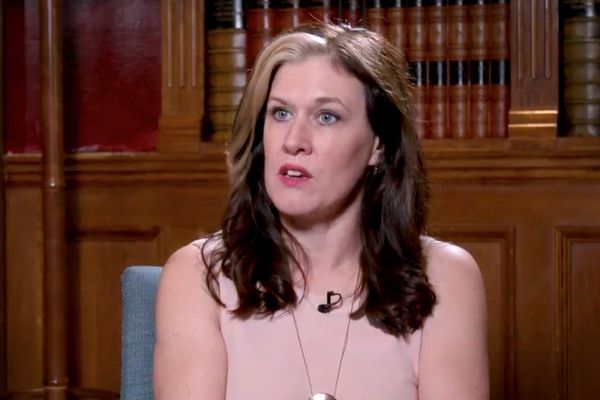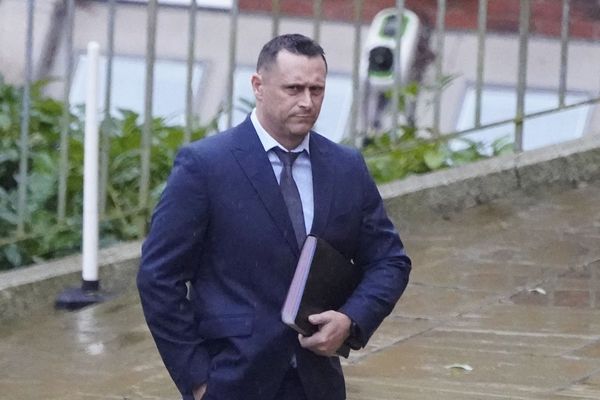
Did Vladimir Putin just try to kill one of his harshest domestic critics?
Though it wouldn’t be the first time the Russian president has gone after enemies—his own or his country’s—with lethal precision, analysts say the apparent poisoning of the opposition politician and anti-corruption activist Alexei Navalny doesn’t quite seem like a Putin hit job.
Navalny was flying from the city of Tomsk, where he had been campaigning with local opposition politicians, to Moscow when he suddenly fell ill on Thursday. In a video posted on Instagram by another passenger, Navalny could be heard crying out in pain before the flight made an emergency landing in Omsk. His press secretary, Kira Yarmysh, who was traveling with Navalny, said he became sick drinking a cup of tea at the Tomsk airport: “We assume that Aleksei was poisoned with something mixed with his tea,” she wrote on Twitter.
Navalny, whom the Wall Street Journal once called “the man Vladimir Putin fears most,” was rushed unconscious to a hospital in Siberia, where he was placed on a ventilator. Doctors at the hospital in Omsk said that the Kremlin critic was in a serious but stable condition.
There is a long history of Russian dissidents and defectors being poisoned or meeting untimely deaths. In 2006, former Russian spy Alexander Litvinenko died in London after his tea was poisoned with the radioactive isotope polonium-210. A British inquiry concluded that agents of the Russian security agency FSB carried out the murder, likely acting under orders from Putin.
“One of poison’s great virtues for the politically minded murderer is their capacity to combine easy deniability and vicious theatricality,” Mark Galeotti, an expert on the Russian security services, told Foreign Policy last year. “Even while the murderer denies any role, perhaps with a sly wink, the victim dies a horrific and often lengthy death. A message in a poison bottle.”
While Navalny has long been an irritant for the Kremlin, organizing large street protests and exposing high-level corruption by Russian officials, including former Prime Minister Dmitry Medvedev, experts were skeptical that it would be in Putin’s interests to kill him.
“I don’t believe this for a second,” the analyst Tatiana Stanovaya wrote on her public Telegram channel. “Some years ago I was told that Navalny’s murder was seen in the Kremlin as a kind of nightmare scenario—one that would be seen only as a dangerous kind of provocation that would spark protests.”
The timing of the incident makes the Putin theory seem especially unlikely—as the Kremlin juggles a large coronavirus outbreak, an escalating political crisis in neighboring Belarus, and unrest in the far-east region of Khabarovsk.
In the week before he fell ill, Navalny was in the Siberian cities of Tomsk and Novosibirsk to show support for local opposition candidates ahead of city council elections next month. The local news outlet Tayga.info reported that he also may have been collecting material for an investigation into the activities of politicians from Putin’s United Russia party, raising the possibility that his poisoning was orchestrated by politicos outside the Kremlin.
“He’s garnered hundreds of enemies in the past few years, including some hardened individuals,” Stanovaya wrote.
Seva Gunitsky, an associate professor of political science at the University of Toronto, said the incident could also point to a burgeoning chaos in Putin’s system of control.
“[I]t’s natural to assume Putin had Navalny poisoned, but the scarier and equally plausible option is he can’t really control when and how people with a lot of enemies get poisoned,” Gunitsky wrote on Twitter.
While political power in Russia is highly centralized under Putin, the system is not without its rogue elements looking to settle personal scores, protect their own economic interests, or curry favor with the president.
The best example would be the Chechen leader Ramzan Kadyrov, who stands accused of helping orchestrate the murder of the Russian opposition politician Boris Nemtsov in 2015 and the journalist Anna Politkovskaya in 2006.
Still, it would be premature to absolve Putin, who for 20 years has presided over a system where political opponents, journalists, and human rights activists are assaulted and assassinated, often with impunity.
“The bottom line is that Putin is a self-appointed ruler of a country where opposition figures regularly get murdered and poisoned, and where there is no rule of law. Therefore, Putin bears full responsibility,” Sergey Radchenko, a Professor of International Relations at Cardiff University wrote on Twitter.
Navalny’s personal doctor Yaroslav Ashikhmin told the independent Russian news outlet Meduza that his team was trying to arrange a medical transfer to Europe. According to one of Navalny’s aides, the hospital is so far refusing to allow him to be moved, claiming his condition is too fragile. Another of Navalny’s physicians, Anastasia Vasileva, said that his team had asked the Kremlin for assistance in transporting him to Europe for treatment.
Last year Navalny was hospitalized after developing a severe allergic reaction to an unknown chemical substance while in prison, where he was serving a 30-day sentence for organizing an illegal protest in Moscow. Doctors feared at the time that Navalny had been poisoned, though his condition this time seems far more serious.







